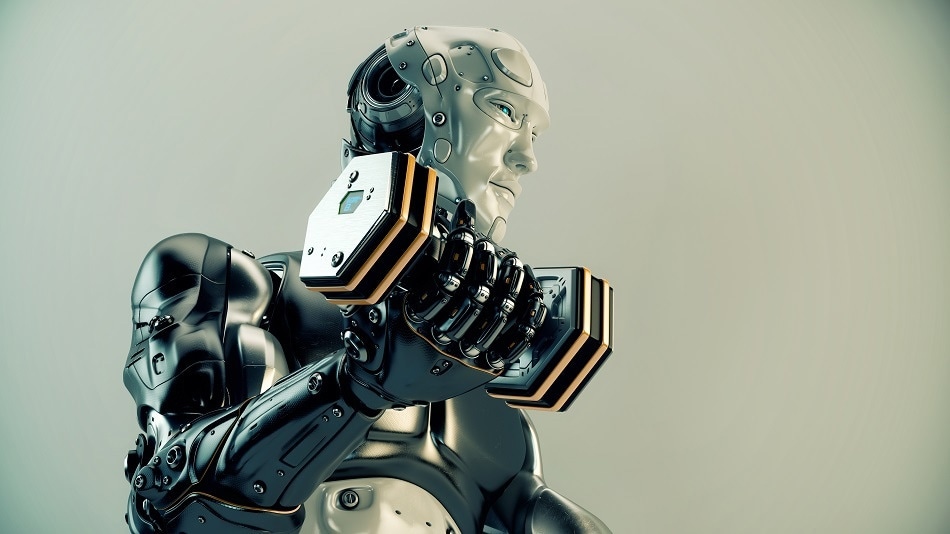
Image credit: shutterstock.com / Ocacia
There is an abundance of research around the world that focuses on humanoid robots that can imitate human drive mechanisms - mechanisms that humans have, but conventional robots don’t. A team of researchers from Japan have developed a musculoskeletal robot that uses thin McKibben muscles as an actuator to build a multifilament muscle that has characteristics similar to those of lower-limb human muscles.
Muscoskeletal robots with tendon-driven systems, usually composed of motors, are known to better imitate human motions and characteristics than any other drive mechanism. Previous robots, such as Kenshiro and ECCEROBOT, have been designed with tendon-drive systems similar to that of humans but are very heavy, not densely attached to the muscles and have a poor backdrivability. So, such robots have been found to produce a redundancy that is not comparable to that of a human.
A McKibben artificial muscle is an actuator with a similar elasticity and compliance similar to human muscles. They are also compatible with tendon-driven mechanisms. Previous efforts many decades ago yielded some robots using McKibben muscles, but were limited in the number of muscles on each leg. Even so, such robots have provided a good platform for current research, especially when they have been found to previously work in a basic fashion.
New McKibben Artificial Muscles
The researchers have developed a thin McKibben muscle with a flexible shape and is the thinnest, lightest, and most compact McKibben muscle to date. The thin McKibben muscles were found to produce a contracting force and ratio just like a like human muscle, and can be bundled together to form multifilament muscles- muscles with two ends on one side, such as the bicep. These McKibben muscles can also be densely populated onto a tendon-driven.
Through using multifilament muscles, the Japanese researchers have now produced a musculoskeletal robot that contains the same amount of muscles as a human leg. The lower-limb robot produced human-like knee and ankle motions, with foot deformation, that has not been seen with any other robots and actuators.
The lower-limb robot was possible through the researcher’s ability to mass produce thin McKibben muscles, with an outer diameter of 1.8 mm. The actuators in the McKibben muscles were made from a silicone tube with hardness of 40 shore A, 1.3 mm outer diameter, 0.9 mm inner diameter and the outer-sleeve yarn was composed of a 0.12 mm Tetoron monofilament. The researchers also implemented an 18° braiding angle with 24 outer fibres. The McKibben muscles produced show a hysteresis with a maximum contraction force of 11, maximum contraction ratio of 24% and an air pressure of 0.35 MPa.
The Musculoskeletal Lower-Limb
The researchers constructed a multifilament muscle with a tendon at each end, with one end containing high density polyethylene fibres and an air supply made of a heat-sink plastic. The multifilament was composed of 60 thin McKibben muscles, of 310 mm in length, and a contraction ratio and air pressure of 20% and 0.25 MPa, respectively.
The researchers found it to be a simple task to produce a muscle with desired properties. The thin McKibben muscles were found to be proportional to multifilament molecules in terms of contraction ratio and force. However, it also meant that the contraction force is marginally smaller than that of a human muscle due to the dead space in between the muscles. To combat the dead space in the muscles, the researchers designed the muscle to possess a contraction force 10 times that of a human muscle.
The designed microfilament muscles were found to imitate the shape and functionality of human muscles. This also allowed these muscles to possess several points of force application which can be easily changed through an output force increase. The number of microfilaments, and consequently the number of McKibben muscles, varied depending on the joint. The researchers produced muscles with different shapes, all of which had a different microfilament composition, to simulate the different muscles found in a human lower-limb. Each joint contains the same amount of muscles as the direct human counterpart.
For the robot itself, the researchers designed a robot comparable to a person of 1.6m in height and the muscles were attached to an anatomical body commonly found in a hospital or science classroom. The knee had to be adapted to provide a rotational centre with linkage mechanisms.
The researchers tested the flexion and extension of the knee joint and the internal and external rotation of the ankle joint. They found that both rotations around the ankle were equal to those of a human. Whilst, the flexion and extension of the knee were found to be very similar- only a degree less than human knee joints.
The researchers also used an extrinsic muscle to simulate the movement of the foot around the ankle joint through inversion and eversion motions. The robot produced is the first of its kind to simulate human motions and characteristics by imitating the human drive mechanism. The researchers now plan on exploring more of the properties that these artificial muscles offer and are considering using this approach to produce artificial limbs for the whole body.
You can read the entire article here.

This information has been sourced, reviewed and adapted from materials provided by SpingerOpen.